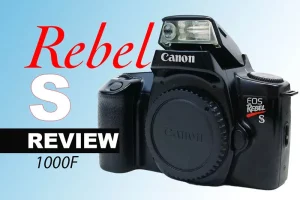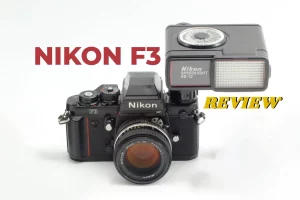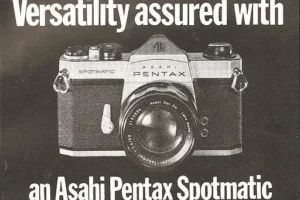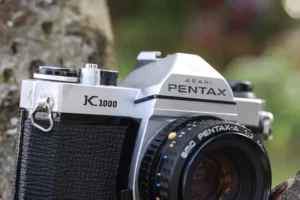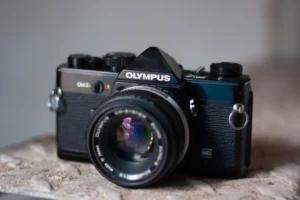Minolta XG-1 Review: How good is it really?
Last Updated on December 28, 2023
Editorial Note: By purchasing through the links on DustyGrain, we may earn a commission. These earnings do not dictate our opinions or product evaluations.
In this Minolta XG-1 Review, we will talk about one of the brand’s most popular cameras in the 70’s. Released in 1979, the XG-1 was one of the first cameras in the XG family and became a popular choice in the US market.
The XG line of 35mm cameras was introduced by Minolta in 1977 with the release of the XG-7 model (XG-2 in Europe). Two years later the XG-1 was released, which was the second camera in the family and had some differences from the previous model, such as a non-removable back cover and the absence of a memo/reminder holder.
Despite these differences, the XG-1 was a successful model in the export market, although it was not sold in the Japanese domestic market.
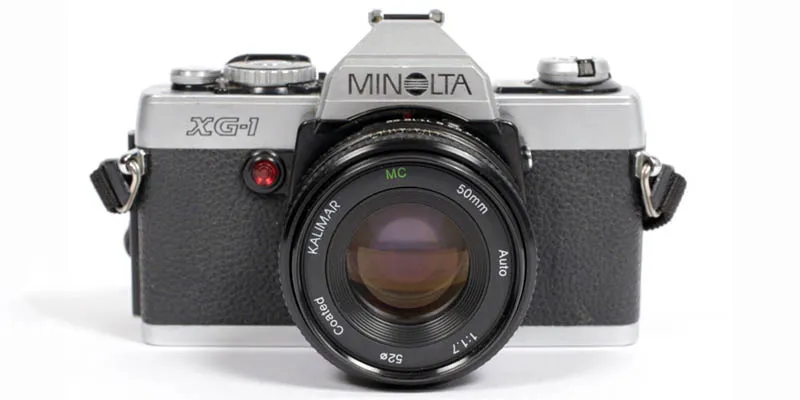
Table of Contents
Specifications
| Year release: | 1982 |
| Type: | SLR (Single lens reflex camera) |
| Film format: | 135 (35mm) |
| Lens mount: | Bayonet Minolta SR mount (MD) |
| Standard lens: | 50mm f/1.7 MD Rokkor |
| Exposure times: | 1 sec to 1/1000 sec, Bulb |
| Shutter: | Electronically-controlled horizontal travel cloth |
| Metering: | CdS light meter, Center-weighted metering |
| ISO range: | 25 to 1600 |
| Exposure modes: | Aperture priority, Manual |
| Exposure compensation: | ± 2EV (0.5EV steps) |
| Viewfinder: | 93% coverage |
| Flash Connection: | Hot Shoe, PC sync port |
| Flash: | TTL flash auto-exposure, 1/60 sec sync |
| Self-timer: | 10 seconds delay |
| Battery: | 1,5 volt, 2x SR44/LR44 or 1x CR-1/3N |
| Dimensions: | 138 x 88 x 52 mm |
| Weight: | 490 g |
XG-1 names and generations
One of the things I like least about Minolta, and that has nothing to do with cameras, is the futile desire to give multiple names to the same camera model, depending on the market where it is sold it has a different name (Japan, Europe and America). Not to mention that the numbers in the name do not have any useful information on the evolution of the model, or anything.
In the case of the XG-1, it did not have another name because it was only marketed outside of Japan, however, of the 3 models that came out, the first was called XG 1 (without the hyphen), the second is XG-1 (with hyphen) -yeh, WHUT- and the third one is XG-1n.


In any case, the only difference between the first version and the second, is that beautiful hyphen in the name and debuted the new Minolta logo. With the third (XG-1n) they simply redesigned the camera in plastic and added a grip.
Lenses
The MD series lenses are contemporary to the XG-1, but it is capable of receiving any of the lines made by Minolta before the all-electronic age. That is to say the SR, MC, MD series and the MD X-600.
The standard lens for the XG-1 is the MD Rokkor 50mm f/1.7 which is pretty much the kit lens for the entire XG series. It is made of 6 elements in 5 groups, the apertures go from f/1.7 to f/22. It can work in full automatic mode on cameras like the XD11 and X-700.
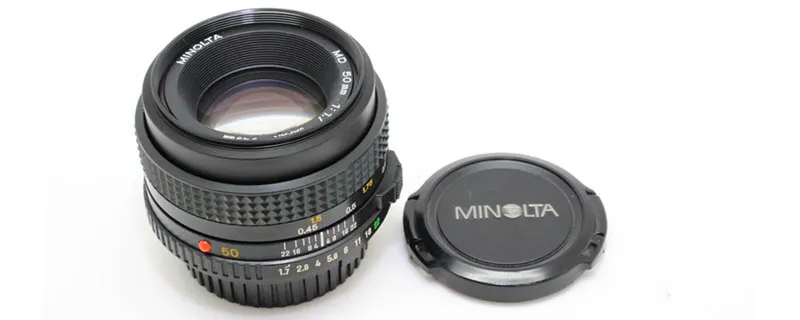
It is one of Minolta’s most produced lenses, easy to get and inexpensive. But there are many others that complete a wide range of focal lengths, including the Rokkor MD 24mm f/2.8, Rokkor-X MD 50mm f/1.4, Rokkor-X MD 45mm f/2 (my favorite), Rokkor MD 85mm f/1.7, Rokkor MD 135mm f/2.8, the spectacular Rokkor MD 50mm f/1.2, among others.
There is an even larger range of third-party lenses that make for an endless list of lenses that can be used on the XG-1. Some of the better known manufacturers are Vivitar, Albinar, Tamron (adaptall 2), Spiratone, Sigma, Soligor, Quantaray, Tokina, Itorex, Kiron and Kalimar. But believe me the list is long, I would dare to say that there are more lenses with this mount than any other.
Check the prices of Minolta lenses at KEH Camera.
Metering
The battery-powered CdS electronic sensor is responsible for the measurement in the XG-1, the measurement is center-weighted and the data is received and displayed through viewfinder.
In aperture priority mode (A) the camera decides the speed automatically according to the previously chosen aperture. In manual mode (any speed) the light meter will act as a guide and display the measurement through the viewfinder.
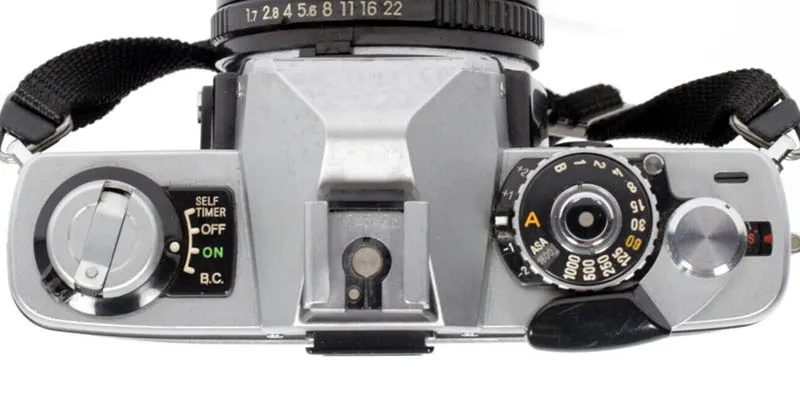
Since the X-G1 (all generations) is a fully electronic camera, both the self-timer and the shutter will depend on the battery. That is why the battery check function (B.C) is also implemented in the camera and is located right next to the self-timer selector.
Viewfinder
The viewfinder has a coverage of 93%, is bright and clear, something that is appreciated. The viewfinder uses the classic split-image focusing system and provides all the information sent from the light-meter for measurement.
Measured shutter speeds are indicated by red LEDs next to the numbers, with the intermediate speed displayed by a pair of LEDs. Over and under exposures are indicated by arrowed LEDs at the top and bottom of the vertical bar (w/all speeds), and a flash-ready LED indicator when using the camera with a compatible flash unit.
Shutter
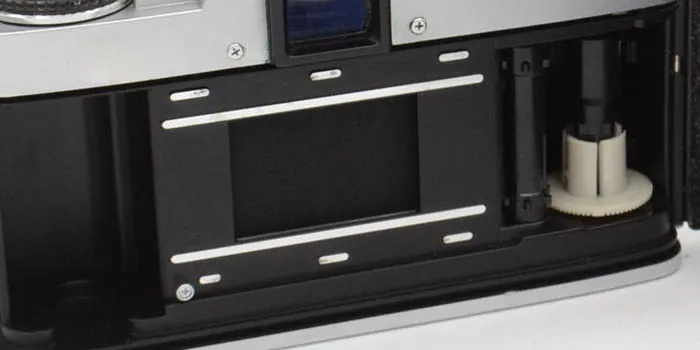
The XG-1’s shutter is a horizontal travel curtain and is electronically controlled, so it requires batteries to operate. It is practically the same shutter as the X-700 with the exception that the latter is completely mechanical and can be operated without batteries.
Price
The Minolta XG-1 is one of the cheapest cameras you can find with an MD mount, prices range from a few bucks up to $50 (body only). Anyone could say that it is undervalued, and it is a bit, like many entry-level models from Minolta, but the truth is that the price is due to the fact that there are enough of them on the market more than anything.
Sample photos





Conclusions
To conclude with this Minolta XG-1 review, we will say that this is a simple, easy-to-use, compact camera that is suitable for any occasion. It doesn’t have fancy mechanics so it’s reasonably light compared to other Minolta models.
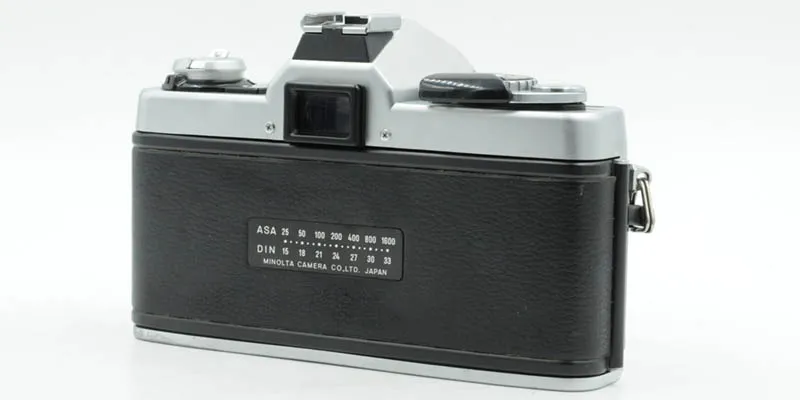
The only downsides will depend on what you expect from it, in my case I’m not a fan of battery dependent cameras (although I have quite a few). But far from being a complaint, I understand that many times you can not demand that kind of niceties, especially if you don’t put yourself in the situation of depending on it professionally. In any other case, it’s a reliable and fun camera.

Written by Jorge Ferrufino
“I am a fashion photographer and an analog photography enthusiast since the beginning of my career (15 years ago). I have had the opportunity and honor of showcasing my work in various galleries and publications around the world.“

